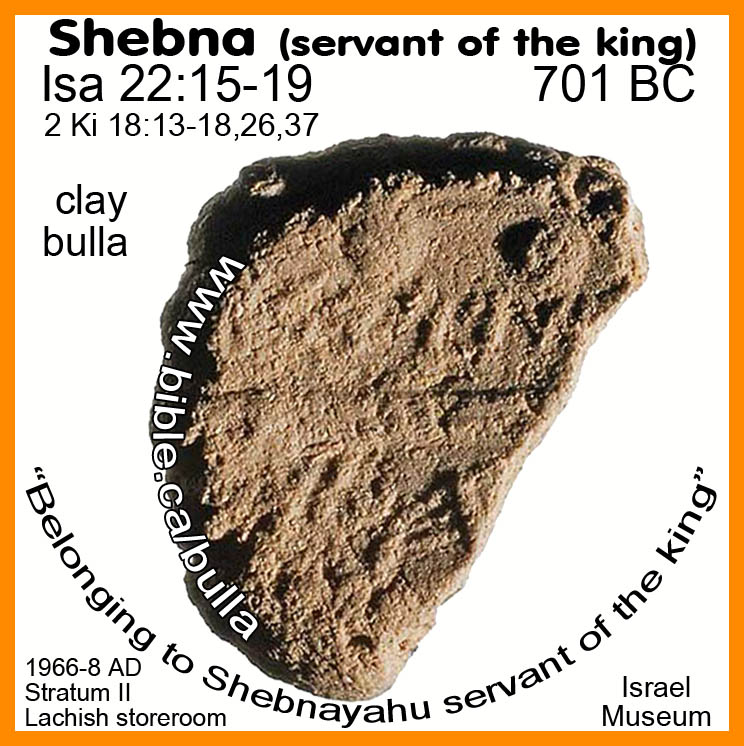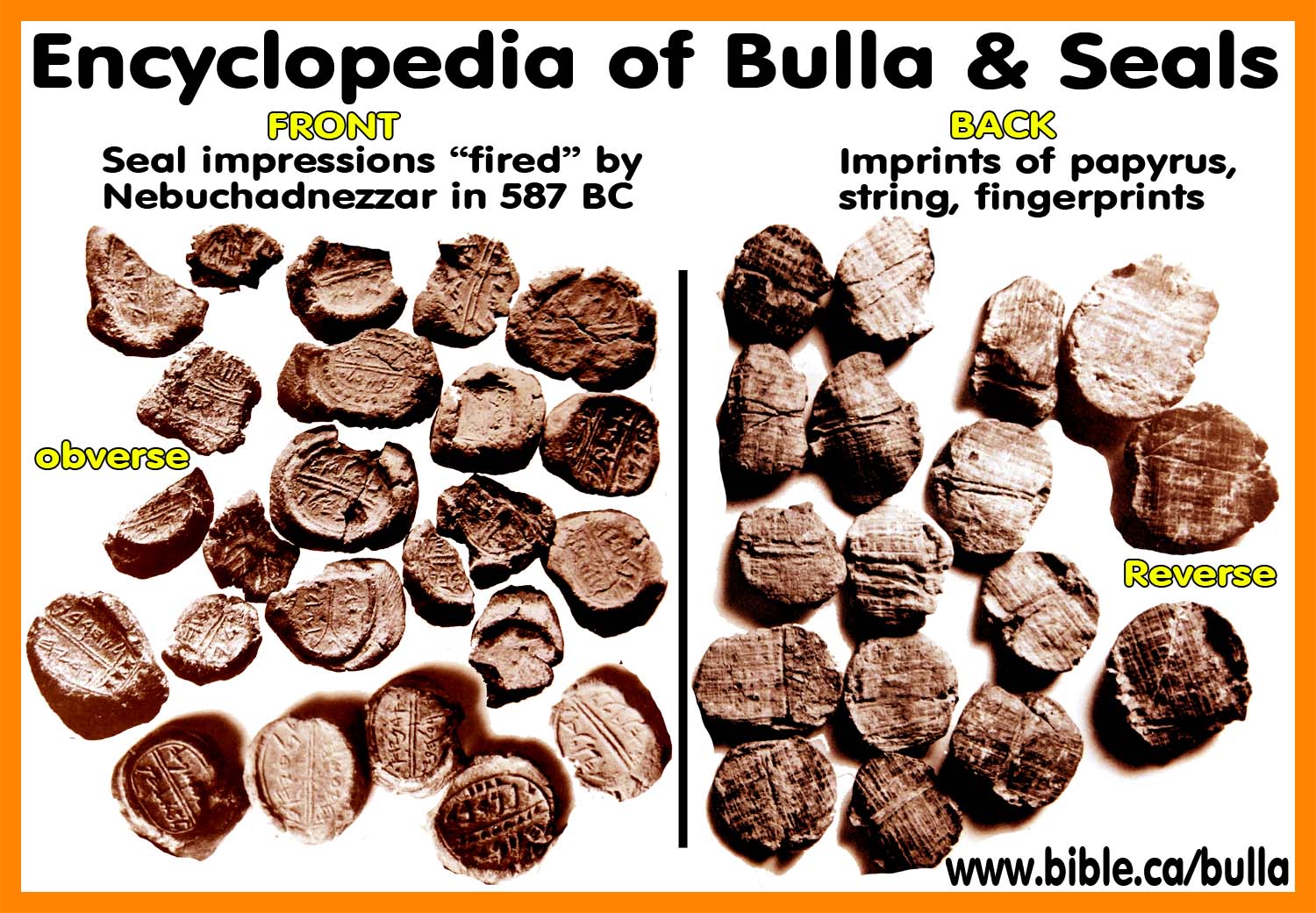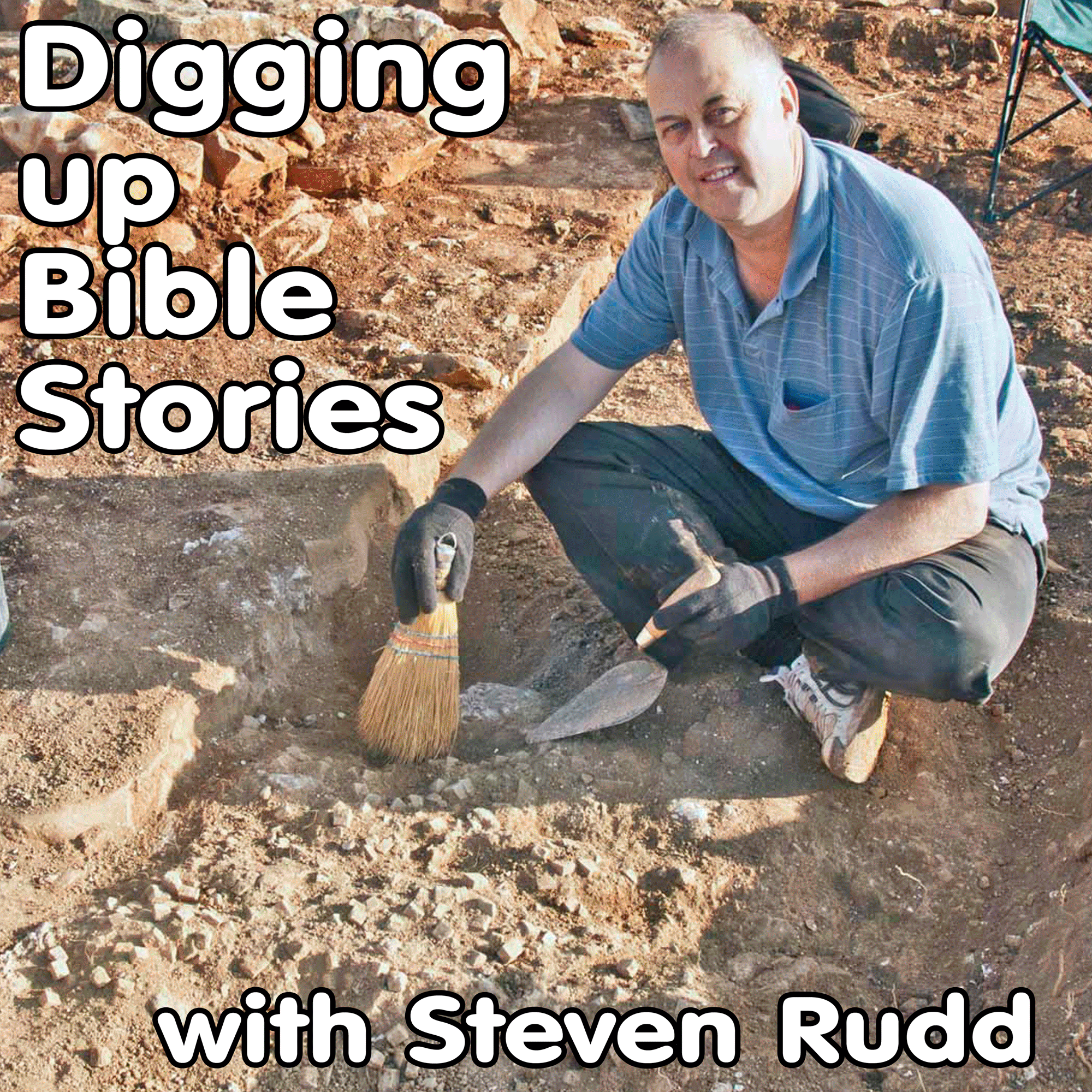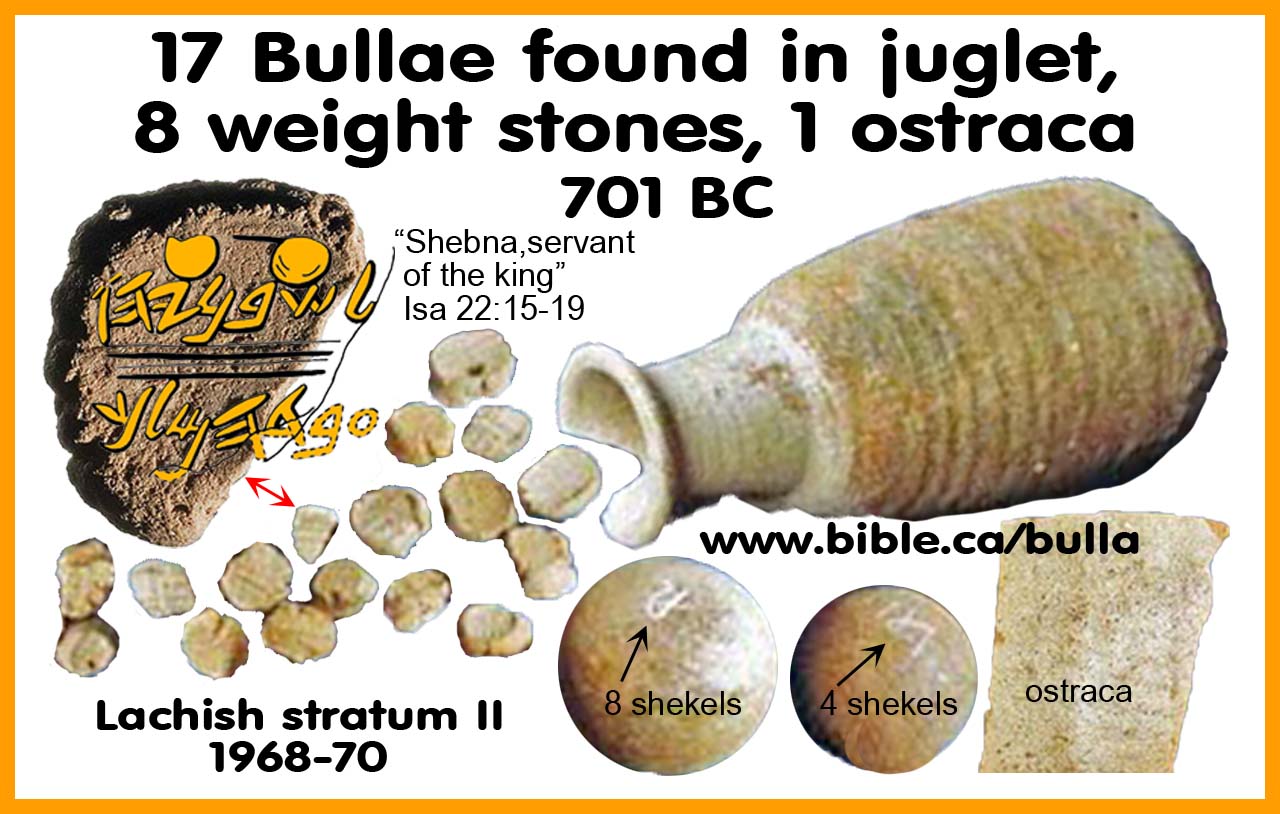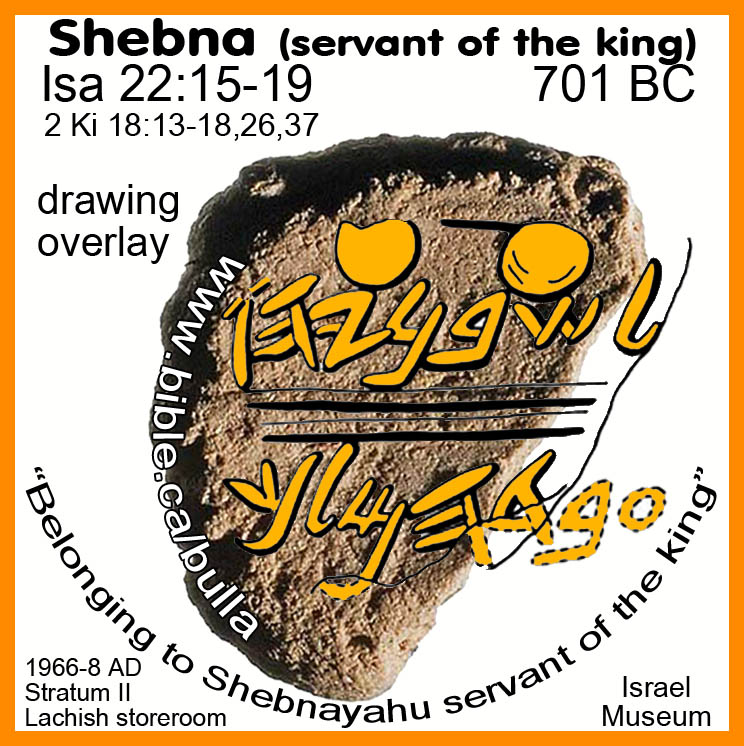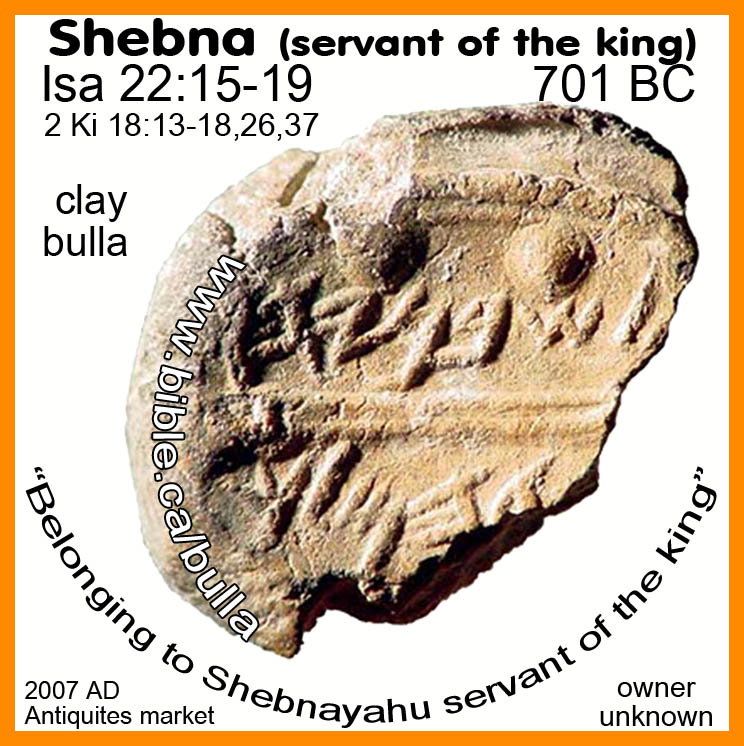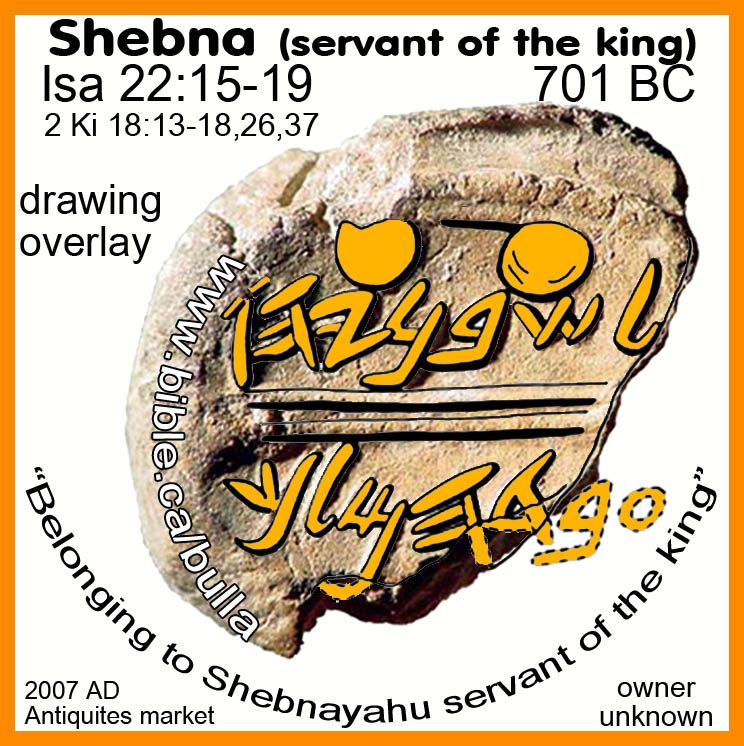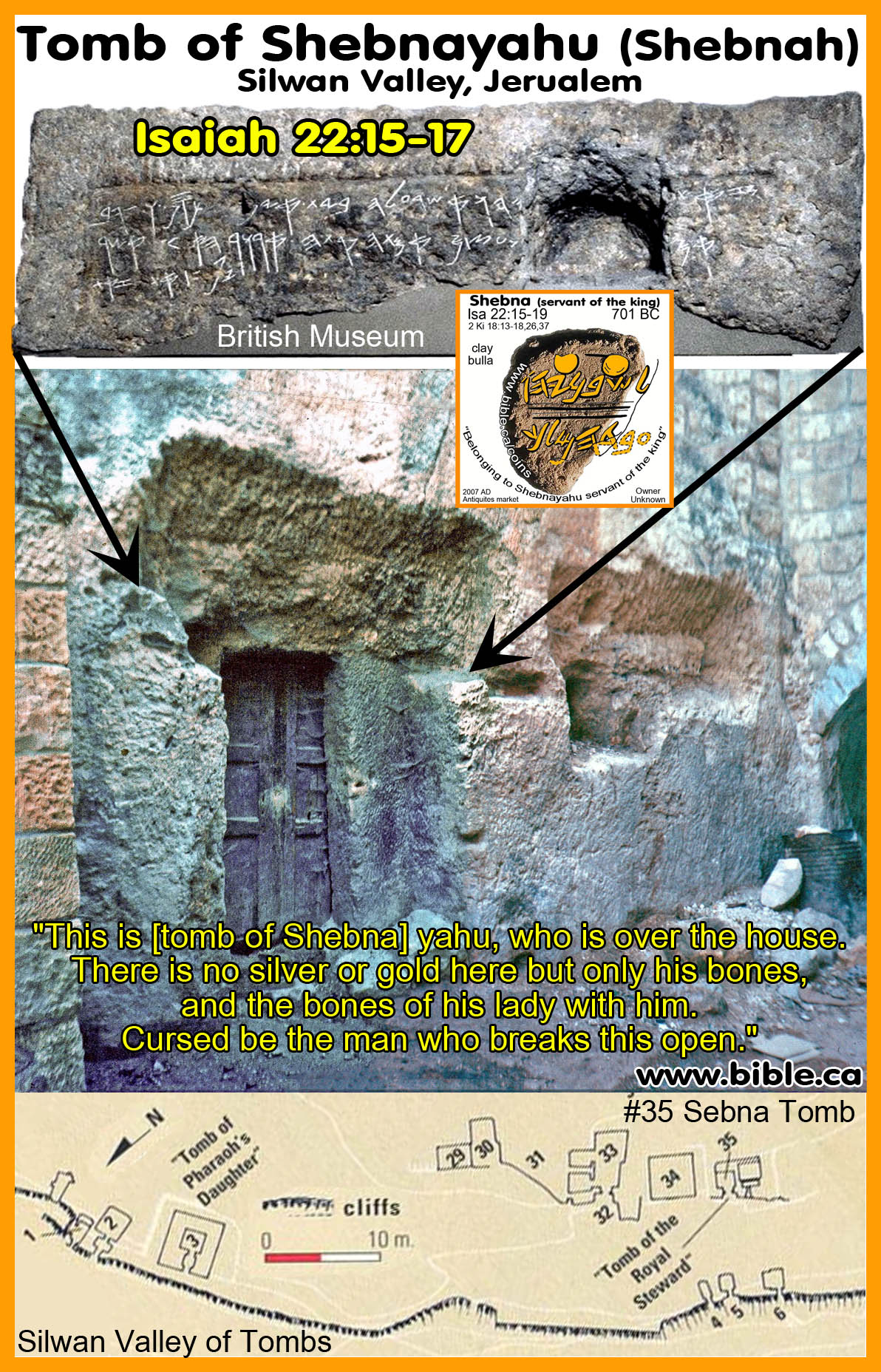Bulla of Shebna servant of king
Bible Bullae from Israel and Judah
|
Bulla of Shebna servant of king "Archaeologists are digging up bible stories!!!" |
|
|
||||||
|
Encyclopedia of Bullae and Seals: The Exhibit: On-line Museum of Bulla and seals Security: How bullae are made to seal papyrus Forgeries: Known fake bullae and seals |
||||||
|
|
||||||
|
Archaeologists are digging up bible stories!!! |
||||||
|
Archaeology is an important science that confirms the historical accuracy of the Bible. Since the Bible refers to hundreds of cities, kings, and places, we would expect to find evidence from on-site excavations. And this is exactly what we have found. The Bible is the most historically accurate book of history on earth. Read the Bible daily! |
|
|||||
|
|
||||||
Encyclopedia of Bullae and Seals of Judea and Israel
|
Bulla "belonging to Shebna servant of king" |
|
701 BC |
Shebna, servant of the Lord |
Shebna, servant of the Lord.
Same seal made both bulla!
BAR 35:03, May/Jun 2009
(Tracking Down Shebnayahu, Servant of the King, Robert Deutsch, BAR 35:03, 2009 AD)
bible-archeology-jeremiah-clay-bullae-seal-inscription-property-of-belonging-to-Shebna-Shebnayahu-servant-of-the-king-Isa22-15-19-2Ki18-13-18-Lachish-701bc
Photo of lachish jug with bulla:
"Another link in the chain. During Yohanan Aharoni’s 1966–1968 excavations at the site of Lachish in the Judean Shephelah, a young area supervisor named Volkmar Fritz uncovered a rich hoard of pottery (including the juglet in the photo), six inscribed shekel weights and an ostracon, all of which had probably been stored on a shelf that collapsed in antiquity. Inside the juglet Fritz found 17 lumps of clay that turned out to be bullae, or clay seal impressions, many of which bear Hebrew inscriptions." (Tracking Down Shebnayahu, Servant of the King, Robert Deutsch, BAR 35:03, 2009 AD)
"On the floor of the storeroom, Volkmar Fritz found six inscribed shekel weights (weighing four and eight shekels), an ostracon (a kind of ancient notepaper with writing on a piece of broken pottery) and a rich hoard of pottery. Aharoni speculated that the pottery had been stored on shelves that collapsed in antiquity. After a juglet had been photographed in situ, Fritz lifted it for registration and packing. When he emptied it of the dirt inside, he felt some small clay lumps. When the 17 lumps were cleaned and examined, they turned out to be bullae that had been used to seal documents. For some reason they had been collected and placed in the small cylindrical juglet. On the back of the bullae were impressions of the papyrus documents they had once sealed—even impressions of the string that tied the documents, over which the seal was impressed into a clay lump. On the front of some of the bullae were Hebrew inscriptions." (Tracking Down Shebnayahu, Servant of the King, Robert Deutsch, BAR 35:03, 2009 AD)
By Steve Rudd: Contact the author for comments, input or corrections.
